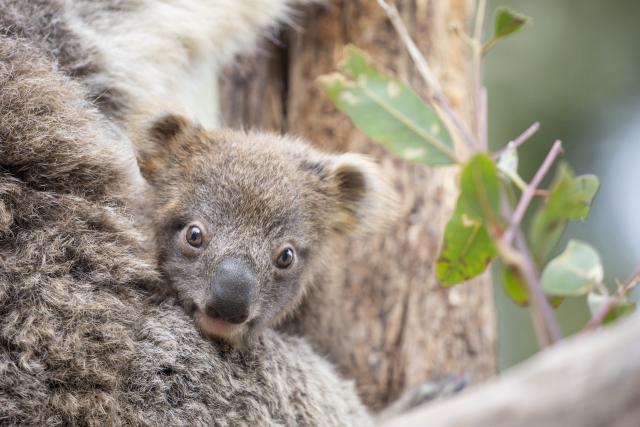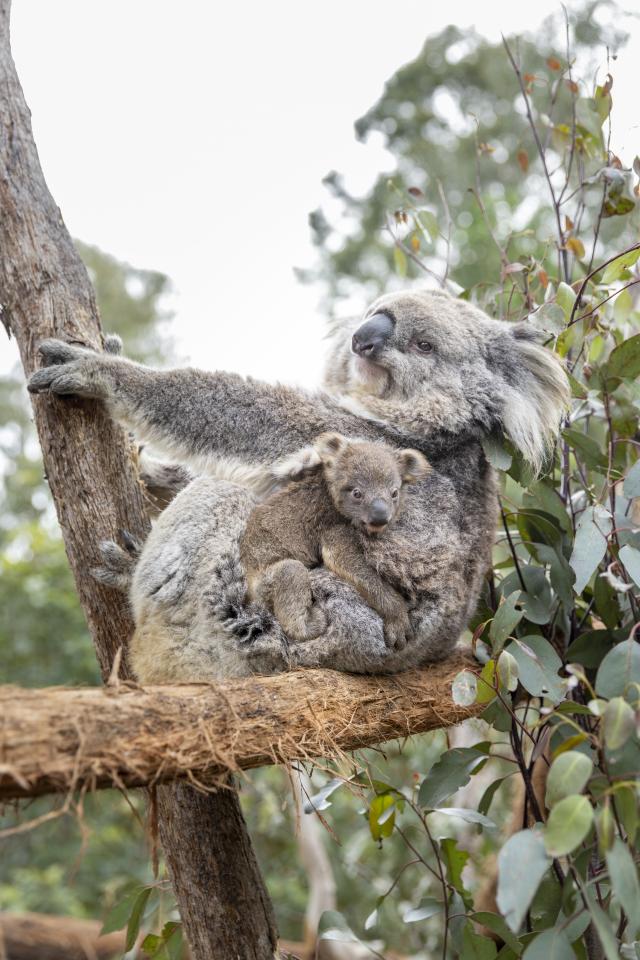
A fuzzy-eared youngster at Healesville Sanctuary is popping its head out of mum’s pouch delighting visitors during the school holidays.
The little one with big eyes and a pink chin is the fifth offspring to experienced Koala mother, Emily.
Healesville Sanctuary Mammal Keeper Rebecca Clemenger said the joey is exploring its habitat outside the pouch for longer periods of time and gaining confidence with climbing.
“We’re very excited about this new arrival,” Ms Clemenger said.
“We don’t have a name for the joey yet and we are not sure of the sex, but as soon as we find out, we will let everybody know.”
“Sanctuary visitors will be able to see the joey snuggling with mum or riding on her back. We have even seen young joeys clinging to the side of their mother’s head!”
When the joey is about six months old, the mother koala will start producing pap – a specialised form of faeces that allows her to pass on the micro-organisms from her own gut that are essential for digesting eucalyptus.
“While this sounds a bit disgusting, pap feeding helps the joey transition from milk to gum leaves,” Ms Clemenger said.
In the wild young male koalas disperse to establish their own territory at about 12 months old, while young females may choose to stay closer to their mother into adulthood.
This behaviour is replicated at the Sanctuary.
The best time of day to see Emily and her joey along the Koala Forest track is around 10:30am when keepers provide fresh gum leaves.
Nine koalas call Healesville Sanctuary home, spending between 18 to 20 hours sleeping each day.
Koala populations in Queensland, New South Wales and the Australian Capital Territory are listed as endangered under the Commonwealth Environment Protection and Biodiversity Conservation Act 1999.
Koalas are not endangered in Victoria.
However, like all wildlife in Victoria, koalas are protected under the Wildlife Act 1975 (Wildlife Act).
Threats to this species in the wild include loss of habitat, climate change, road collisions and the disease Chlamydia.







